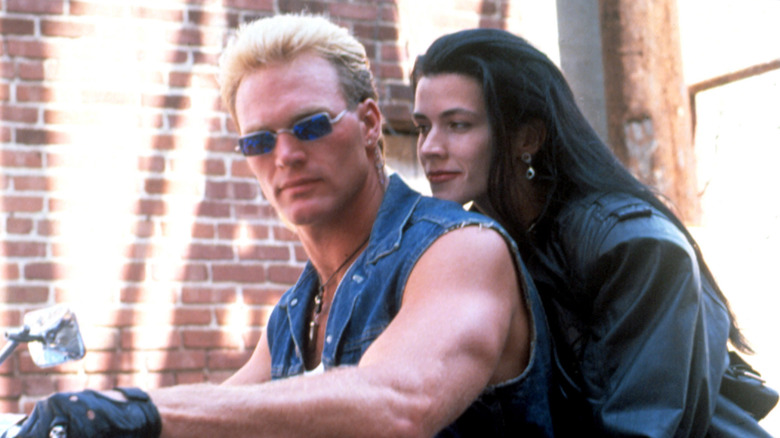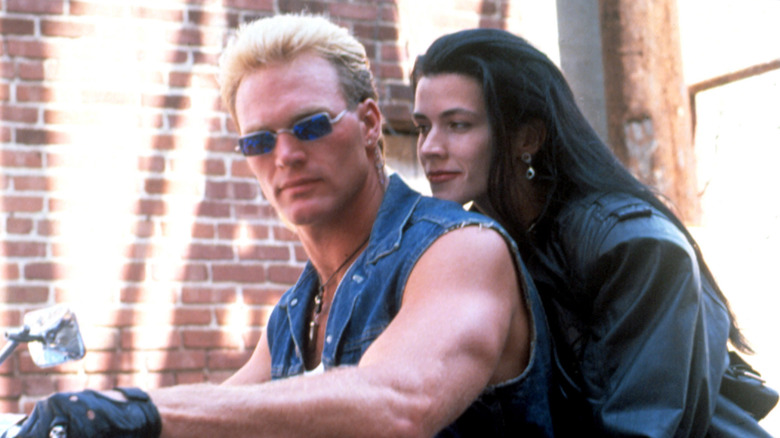 Columbia Pictures
Columbia PicturesWhat is a B-movie, anyway? The term once referred to the Hollywood practice of showing two movies at theater screenings – a major studio or “A” picture first, followed by a cheaper “B” movie. That definition now applies any low-budget, non-studio production, and usually a genre film like horror, action, or science fiction. B-movies are churned out every day; most streaming services offer dozens of new films in this category, all vying for audiences’ attention with sex, violence, faded stars, and a passing similarity to bigger-budget features.
Many B-movies are among the worst movies ever made, but not all B-movies are junk. “Night of the Living Dead” (1968) reshaped horror tropes, but is still essentially a B-movie; so are “Slacker,” “Clerks,” and “The Evil Dead.” Every decade since the dawn of talkies has its share of popular and successful B-movies, and the 1990s are no exception. Following is a list of ’90s-era B-movies that are worth checking out for a variety of reasons, from hidden quality to unintentional laughs.
One False Move
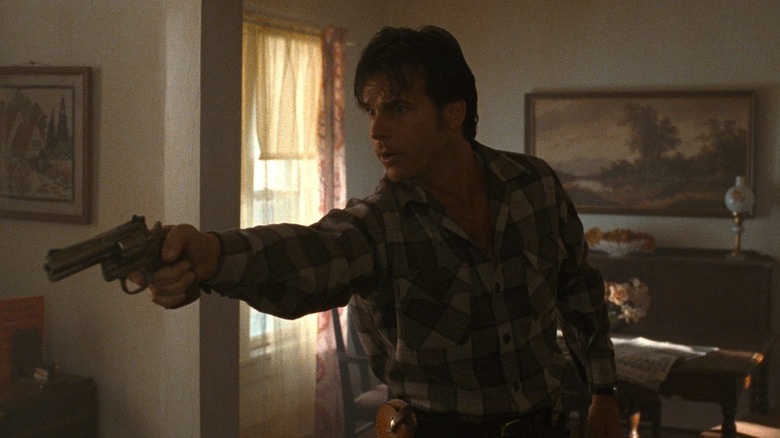 I.R.S. Releasing
I.R.S. ReleasingAn indie thriller that established Bill Paxton as a leading man, put Billy Bob Thornton on the map as a writer and launched Carl Franklin’s directorial career, “One False Move” might have never become a sleeper hit in 1992. Made for $2.5 million, the film was a tough sell, with a first-time director in former actor Franklin, and a first-time feature writer in co-star Thornton. Paxton was its biggest name, but was known more as a character actor in films like “Aliens.” “One False Move” went unreleased for nearly a year until its producers wrangled a series of festival screenings.
Critics and audiences were wowed by the film, which concerned a trio of brutal criminals (Thornton, Cynda Williams, and Michael Beach) who are thwarted by Paxton’s small-town sheriff. “Its power comes from the stripped-down simplicity of its style and the unblinking savagery of its violence,” wrote the Washington Post. But “One False Move” is less a Tarantino-style exercise in bloodshed than a thoughtful character study that refashions movie notions of heroes and villains. Nothing is black and white in “One False Move”; everyone has moral shadings that make their actions more complicated. That complexity helped mint the movie as one of its decade’s best indies, if not one of the best thrillers of all time.
Night of the Living Dead (1990)
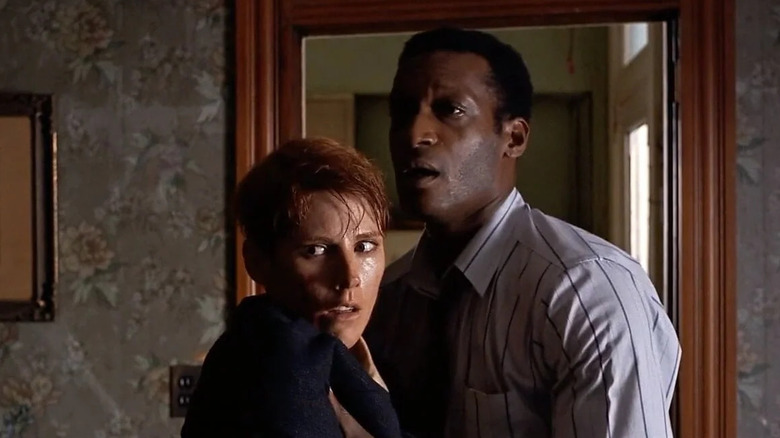 21st Century Film Corporation
21st Century Film CorporationThe 1990 remake of “Night of the Living Dead” was motivated largely by economic necessity. Director George A. Romero never saw much of the 1968 original’s box office due to a faulty copyright, and launched a remake to recoup decades of losses. The new version, written by Romero and directed by special effects legend Tom Savini, followed its predecessor’s template but also added new touches: chief among these was Patricia Tallman’s Barbara, who was transformed from a meek victim in the original to a warrior here.
Described by Savini as “absolute torture,” the production was beset by problems, including numerous cuts to earn an R rating, which doomed the film with horror fans. Though dismissed in 1990 as a carbon copy of the groundbreaking original, Savini’s film is now a favorite among the horror faithful, with many critics singling out the abundant gore and fresh take on Barbara as its chief virtues. Even Savini himself likes it. “I saw it objectively, and it’s good,” he told Famous Monsters of Filmland (via It Came From… blog). “The actors are great, the suspense is there. I mean, it’s good!”
Neon City
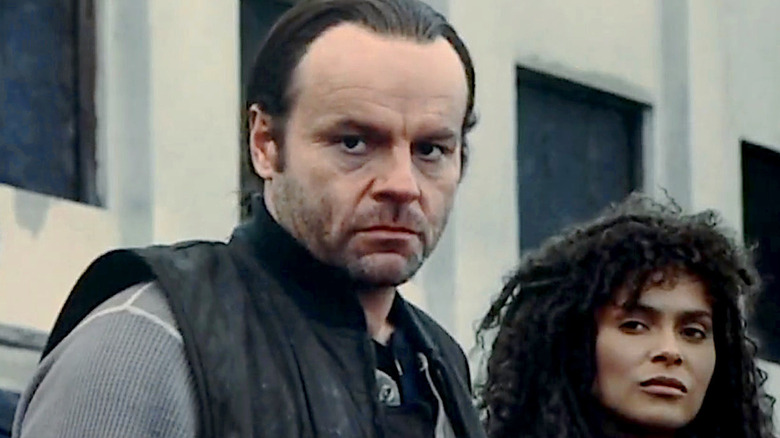 Trimark Pictures
Trimark PicturesThough dozens of “Road Warrior” clones roared across home video screens in the ’80s and ’90s, 1991’s “Neon City” has a few distinguishing marks that make it one of the better post-apocalyptic movies out there. These include cult favorite Michael Ironside — as a bounty hunter leading a truckload of survivors across an America ravaged by ecological disaster — as well as the stark Salt Lake City locations. As TV Guide noted, “Director and supporting player Monte Markham uses the majestic Utah scenery well and manages the tricky feat of shooting the cramped truck interior with an energetic and fluid lens.”
“Neon City” also doesn’t have the budget for the stunts that fuel most “Road Warrior” retreads, and relies instead on a who-lives-who-dies scenario to build suspense (as many critics have noted, “Neon City” is essentially a futuristic revamp of John Ford’s “Stagecoach”). The odd but capable cast is also a plus: singer-actress Vanity, ex-footballer Lyle Alzado, Juliet Landau of “Buffy the Vampire Slayer,” and even Richard Sanders from “WKRP in Cincinnati.” As end-of-the-world adventures go, “Neon City” isn’t the best, but it’s also far from the worst.
The People Under the Stairs
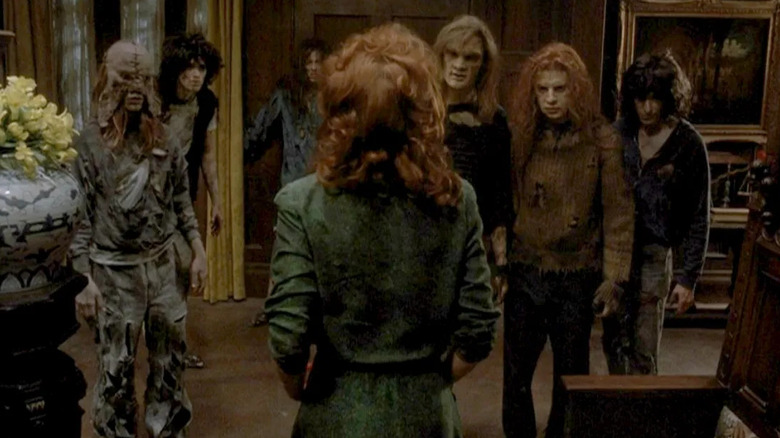 Universal Pictures
Universal PicturesAlthough popular with his fans, “The People Under the Stairs” doesn’t quite make the top tier of Wes Craven’s best movies, like “A Nightmare on Elm Street” or “Scream.” A box office and critical hit in 1992 (even Gene Siskel liked it), “People” shares elements with Craven’s finest films: two memorable villains, a likable hero (Brandon Adams of “The Mighty Ducks”), gruesome violence, some transgressive moments, and the sociopolitical commentary that had been a part of his work since “Last House on the Left.” Jordan Peele even considered a remake as recently as 2023.
It’s possible that “People” hasn’t had the same staying power as other Craven classics because it hangs on a truly nasty premise. The villains are a deviate pair of wealthy landlords (Everett McGill and Wendy Robie, who played the Hurleys on “Twin Peaks”) prey on others in literal and figurative terms: they victimize their largely Black tenants with rent hikes and evictions while also turning a horde of abducted children into cannibalistic monsters.
Their crimes aren’t are graphic as those in Craven’s early shocker, “Last House on the Left,” but the notion is truly horrible (and allegedly based on a real event). Craven makes the premise scary, but also finds excitement, humor, and anger in its critique of wealth and excess. As such, it deserves a closer look.
Stone Cold
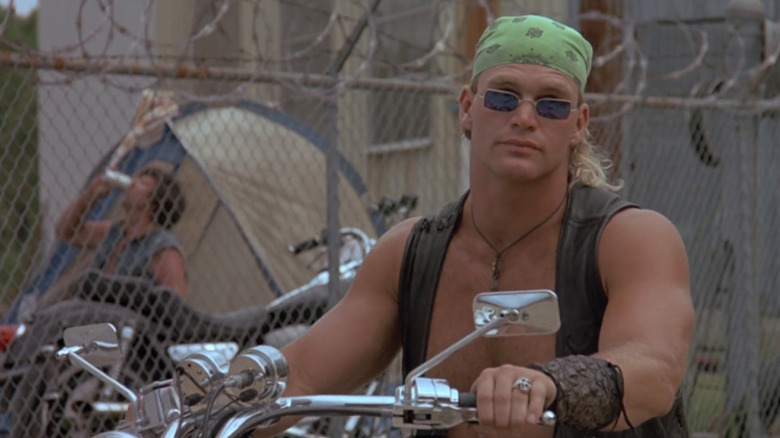 Columbia Pictures
Columbia Pictures“Stone Cold” was supposed to make Brian Bosworth a movie star after his brief, controversial run in the National Football League. The 1991 film didn’t set his acting career on fire (though he continues to log film and television appearances), but “Stone Cold” remains a gloriously over-the-top action entry, rich with testosterone-fueled stunts (including one motorcycle vs. helicopter bit that the New York Times described as packing a “fairly good visceral charge”), overripe dialogue and performances, and the willful disregard for plot logic that makes early ’90s B-action such a guilty pleasure.
What sets “Stone Cold” apart is that everyone — director Craig R. Baxley, Bosworth, and bad guys Lance Henriksen and William Forsythe — seems 100% committed (or in the case of Henriksen, 1000% percent, given his voracious scenery-chewing) to delivering what they believe is the most mind-blowing action movie ever. “Stone Cold” is not that by a long shot, but it’s determined to entertain, and goes the extra mile to sell its store-bought cheese as the finest fromage.
Dead Alive
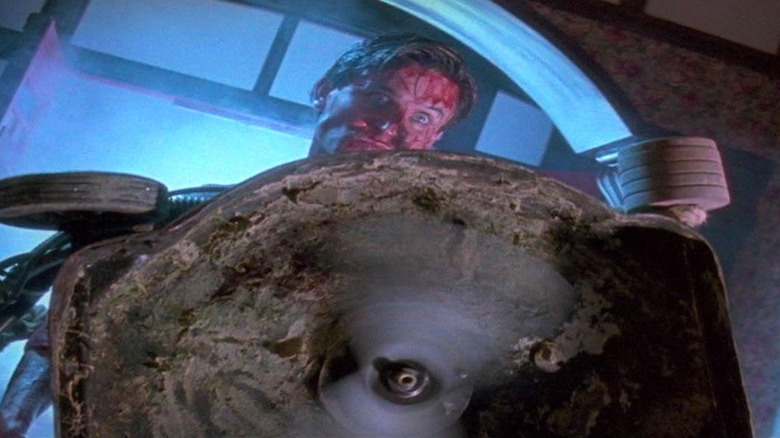 Trimark Pictures
Trimark PicturesAs every bio of Peter Jackson notes, the “Lord of the Rings” director began his career in low-budget features made in his native New Zealand. The title of his first film, 1987’s “Bad Taste,” largely sums up these efforts: splatter-soaked exercises in dark humor. Jackson’s third horror film, 1992’s “Braindead” — released in North America as “Dead Alive” — is awash in gore and zombies. But “Dead Alive” is also a bellwether for Jackson’s filmmaking talent, displaying a knack for humor and spectacle-sized setpieces that would serve him well on later projects.
The premise is totally absurd — mutant rat-monkey hybrids cause a zombie outbreak in a 1950s-era New Zealand suburb — allowing Jackson to design an endless parade of ways in which the human body can be torn apart. But the violence is ridiculous and revels in its own gross absurdity. The bloodshed eventually reaches surreal proportions when Jackson’s hero (Tim Balme) eliminates a crowd of zombies with a lawn mower and later, when he faces a skyscraper-sized version of his dead mother, both of which Jackson handles with a deft technical skill that belies his film’s paltry $3 million budget. The result is “the most hilariously disgusting movie ever made,” as the Los Angeles Times proclaimed.
The Borrower
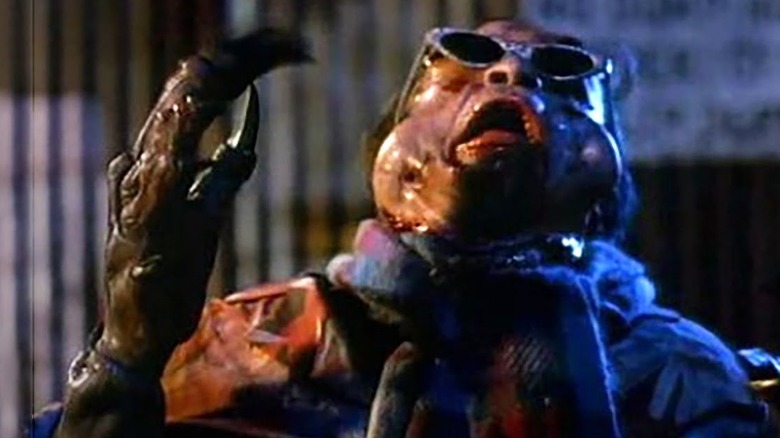 Cannon Films
Cannon FilmsShortly after shocking audiences in the mid-1980s with “Henry: Portrait of a Serial Killer,” writer-director John McNaughton found himself in need of a follow-up project. As he told The Flashback Files in 2017, he turned down countless horror scripts until reading “The Borrower,” a grisly black comedy about an alien criminal exiled to Earth in human form. However, the alien’s body rejects its disguise, requiring it to acquire new heads from unwilling victims every few hours.
McNaughton liked the conceit of the head-swapping alien, which reminded him of actors assuming different roles. “That gave me something to take ahold of, other than just the monster that jumps up from behind a tree to scare you and eat you,” he said. Though not as dark as “Henry,” “The Borrower” delivered splattery horror and offbeat humor in equal measure, helped immeasurably by Antonio Fargas and “Henry” alumnus Tom Towles as various head donors. Completed in 1988 but unreleased until 1991, “The Borrower” earned modest praise from media like the New York Times, which accurately described it as “alternately silly and gross on purpose.”
Tales from the Hood
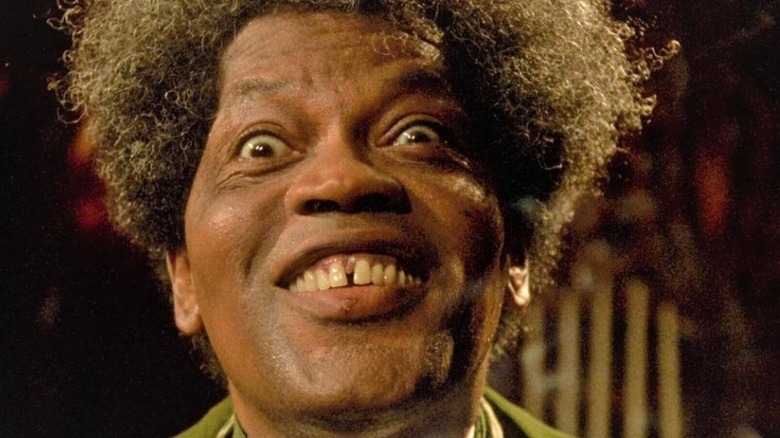 Savoy Pictures
Savoy PicturesThe 1990s were a surprisingly lean period for horror anthologies, with the most notable entry being “Tales from the Darkside: The Movie.” However, one ’90s-era horror portmanteau film that deserves more notice is Rusty Cundieff’s “Tales from the Hood.” Produced by Spike Lee and released in 1995, the film offers a wealth of shocks as well as some pointed and still-relevant social commentary.
Its framing device — a strange funeral director (Clarence Williams III) relates stories about four recent arrivals — leads into traditional horror territory, including revenge from beyond the grave, psychic powers, witchcraft, and unorthodox medical procedures. For most anthology movies, a creepy payoff in each tale would be sufficient, but veteran director Cundieff and writer Darin Scott use the horror as a launching pad to address a deeper fear: the dangers inherent to the Black experience in America.
“Hood” tackles issues of police brutality, institutionalized racism, and the impact of violence to create, as Variety suggested, “a clever commingling of elements from ‘Boyz N the Hood’ and “Tales from the Crypt.'” The messages and frights hit with equal impact, the performances are effective — especially Williams as the ghoulish mortuary owner — and the visual effects belie the low budget. “Tales from the Hood” even got two sequels, in 2018 and 2020.
Frankenhooker
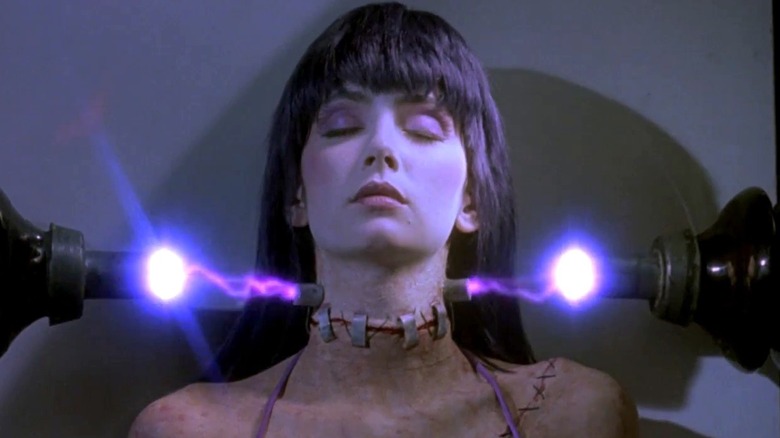 Shapiro-Glickenhaus Entertainment
Shapiro-Glickenhaus EntertainmentIt goes without saying that a film titled “Frankenhooker” is in bad taste. The 1990 comedy, directed by “Basket Case” filmmaker Frank Henenlotter, is about an amateur mad scientist (James Lorinz) who decides that the best way to bring back his fiancee, Elizabeth (Patty Mullen), after her death by industrial lawnmower is to rebuild her from corpses. He harvests the limbs from New York City escorts, whom he eliminates with a drug that causes users to explode. But Elizabeth 2.0 is, unfortunately, the true sum of her parts: a zombified lady of the night, forever lurching after prospective clients whom she kills with a burst of electricity.
On paper, “Frankenhooker” sounds crass and exploitative — and it is. But like the films of John Waters or “The Greasy Strangler,” the gross-outs are couched in gleefully raucous humor; as Fangoria noted, “Henenlotter exaggerates what could have been lurid and unpleasant into something so berserk that you can’t help but laugh.” His two leads also offer maximum support: Lorinz is hilarious as a streetwise, motormouthed Dr. Frankenstein, but Mullen’s post-reconstruction Elizabeth steals the film. She suggests the sympathetic side of Mary Shelley’s monster — physically awkward and desperate to connect with humans — filtered through an MTV video vixen, albeit one with goggle eyes and a bolted-on head.
Highway to Hell
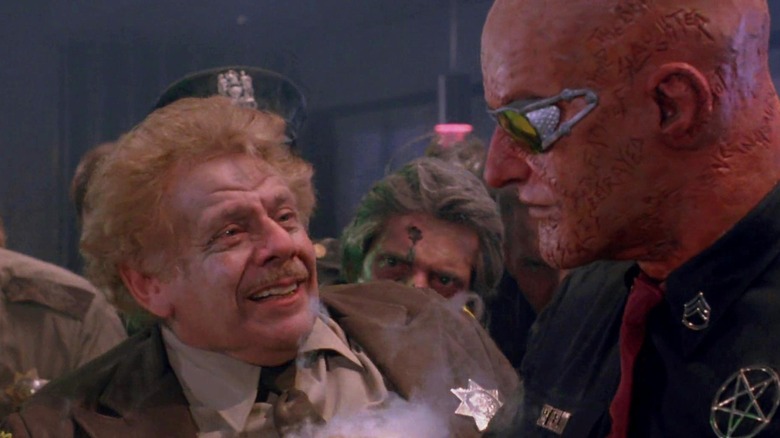 Hemdale
HemdaleA road trip take on Dante’s “Inferno,” the 1992 fantasy-comedy “Highway to Hell” was a staple of home video and cable broadcasts, where it managed to build a small but dedicated following for its pun-heavy humor and imaginative plot. Directed by Dutch filmmaker Ate de Jong, it offers an agreeable amount of action and suspense, some clever gags on mythology and the afterlife, and a host of humorous cameos, including Ben and Jerry Stiller and Gilbert Gottfried.
De Jong gets plenty of production value out of desert locations in Utah and Arizona, while concocting some amusing visual gags. Those include a set of handcuffs made from human hands and a sign noting that the titular road was created by the Good Intentions Paving Company. The cast, led by Chad Lowe and Kristy Swanson, seems to appreciate the chance to play for laughs, and brief scenes involving the Stillers — Ben as a diner cook and Atilla the Hun (opposite Gottfried as Hitler), Jerry as a cop, Anne Meara as a waitress, and Amy Stiller as Cleopatra — boost the laughs immeasurably. Elements like these helped earn “Highway” praise from, among others, Billboard, which noted, “This devil-may-care version of the Orpheus legend is smart, witty, and incredibly imaginative.”
Freaked
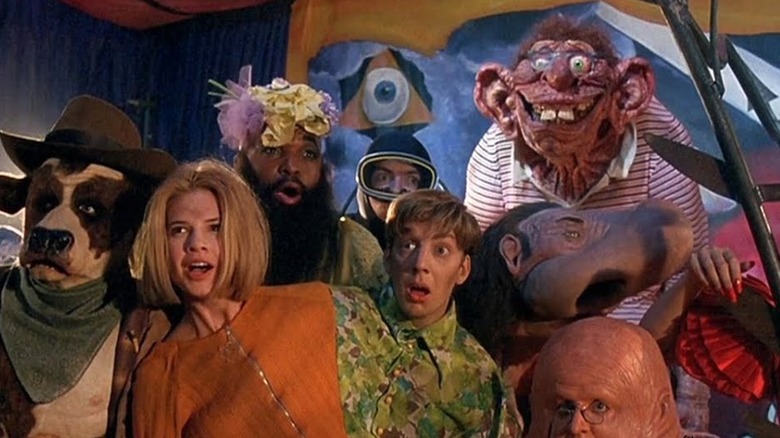 20th Century Fox
20th Century Fox“Freaked” isn’t just an anarchic satire of toxic celebrity culture. Nor is it solely a delirious horror spoof about a mad scientist (Randy Quaid) who creates bizarre sideshow attractions. It’s primarily your chance to see Keanu Reeves as a dog-faced boy, Mr. T in drag, and John Hawkes as a bovine cowboy. The brainchild of “Bill and Ted” star Alex Winter and TV vet Tom Stern, “Freaked” earned a raft of positive press before its release – the Entertainment Weekly review stated, “The movie stuns you into a state of giddy delirium” — but fell victim to a regime change at 20th Century Fox, which dumped the film into just two theaters in the fall of 1993.
Admittedly, “Freaked” is aggressively weird and revels in tasteless jokes. One recurring bit involves an adolescent fan of obnoxious former child star Ricky Coogin (played by Winter) who is thrown from planes, tossed through plate glass windows, and eventually transformed into a pop-eyed monster. But its barrage of gross-outs and hallucinogenic visuals is less assaultive than a steady and very funny stream of warped consciousness; how else to describe a movie which allows a claw hammer to have its own heartfelt flashback sequence?
Shakes the Clown
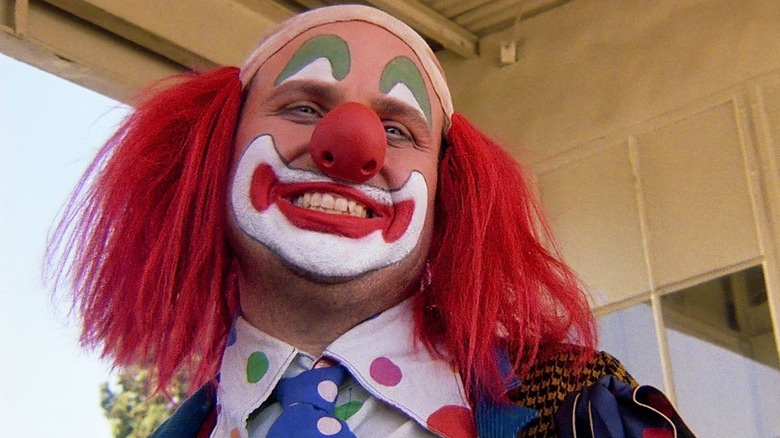 I.R.S. Releasing
I.R.S. ReleasingComedian Bobcat Goldthwait’s directorial career includes such eclectic films as the darkly satirical “God Bless America,” the found footage horror film “Willow Creek” and “Call Me Lucky,” an affectionate documentary about fellow comic Barry Crimmins. Before those, Goldthwait also helmed 1991’s ultra-low-budget “Shakes the Clown,” a broadly surreal comedy about an alcoholic party clown (played by Goldthwait) spiraling into self-destruction in a sort of alternate clown-verse.
“Shakes” envisions clowns in the worst possible light. They abuse drugs and alcohol, commit murder, and struggle with various mental health issues; for every audience member that got the joke, a dozen more found it appalling. Most critics agreed: “The joke gets very old, very fast,” wrote TV Guide. But a small yet dedicated fan base has kept the fires burning for “Shakes.” Diehards praise its commitment to its absurd premise; the Austin Chronicle’s review stated, “‘Shakes’ has its own twisted sense of logic, one that’s easy to buy into and maintain.” Fans have also hailed its cast, which included Adam Sandler, Tom Kenny, Kathy Griffin, and in one manic scene, Robin Williams as a mime instructor.
If you or anyone you know needs help with addiction issues, help is available. Visit the Substance Abuse and Mental Health Services Administration website or contact SAMHSA’s National Helpline at 1-800-662-HELP (4357).
Cronos
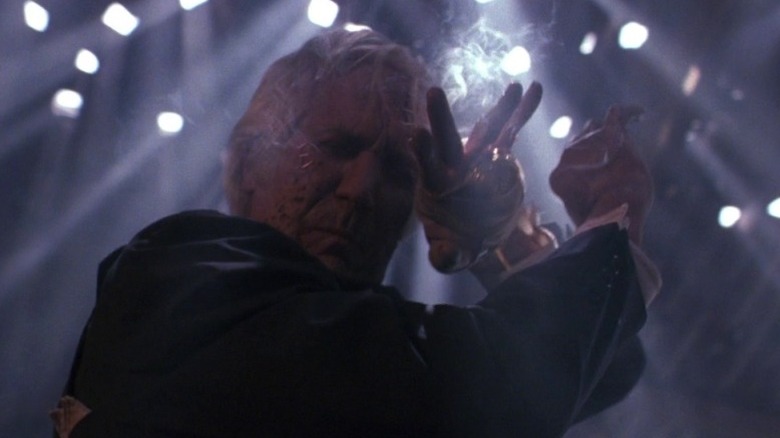 Cineplex Odeon Films
Cineplex Odeon FilmsNothing about “Cronos,” Guillermo del Toro’s 1992 directorial debut, says “B-movie” — except perhaps the plot, which concerns an ancient device that provides eternal life, only with vampiric side effects. Directed with a painterly eye, beautifully photographed by Oscar winner Guillermo Navarro, and featuring outstanding performances by Federico Luppi and Ron Perlman (in his first of many collaborations with del Toro), it’s hard to believe that “Cronos” was made on a B-movie budget of $2 million.
If you’re a del Toro fan, it goes without saying that “Cronos” should be on your watch list. But even if you haven’t see his other films, “Cronos” is a rewarding watch, balancing shocking horror with flashes of humor, pathos, and a touching emotional story between Luppi, the owner/victim of the Cronos device, and his loving granddaughter (Tamara Shanath). Most importantly, it signaled the arrival of del Toro as a singular talent who could craft genre films and studio fare with equal skill, eventually netting an Oscar for his efforts. As The Ringer stated, “‘Cronos’ emerged as a warning shot. His tale of vampirism and immortality is half horror, half historical fable — like all the best del Toro work to come.”
There’s Nothing Out There
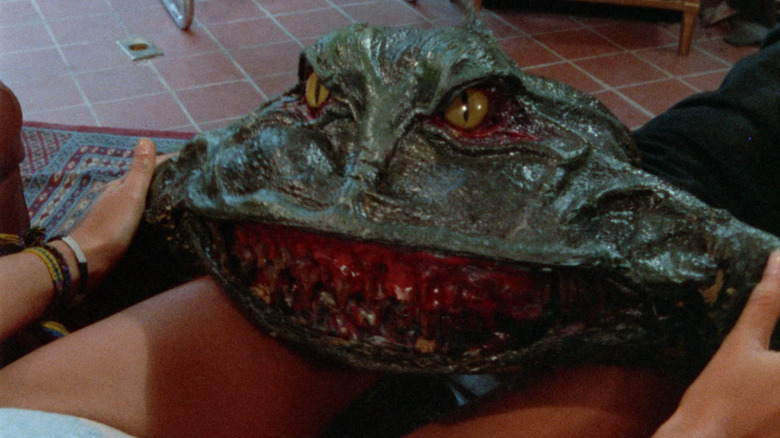 Vinegar Syndrome
Vinegar SyndromeKevin Williamson’s script for “Scream” drew rave notices for its meta-references to slasher movie tropes, but another horror title covered similar ground nearly a half-decade before its release in 1996. Writer-director Rolfe Kanefsky’s 1991 film “There’s Nothing Out There” is a textbook B-movie — shoddy special effects, gratuitous nudity, amateurish acting — but also features a self-referential streak via Mike (Craig Peck), whose knowledge of horror movies proves invaluable to his friends when their weekend getaway is threatened by a hungry extraterrestrial.
“Out There” works largely because Mike’s references are both funny and accurate (“Nick, have you ever heard of the words foreshadowing?” “That’s one word, Mike”). Kanefsky’s direction also rises above the B-movie requirements, with impressive camerawork for a no-budget regional feature and tight editing courtesy of Kanefsky’s dad. These elements earned praise from outlets like the New York Times, which said of the film, “Mr. Kanefsky does show energy and promise.” He’s remained busy ever since, with dozens of independent features and TV movies.

